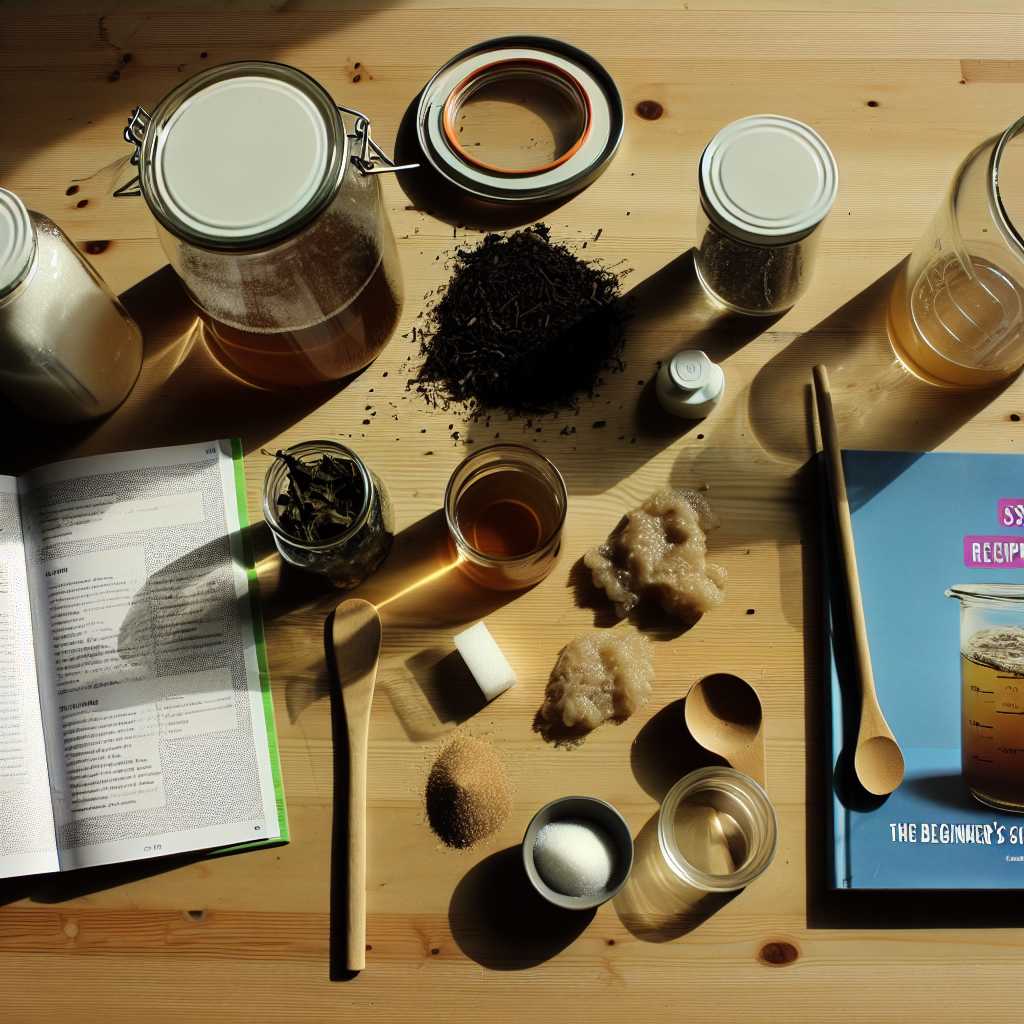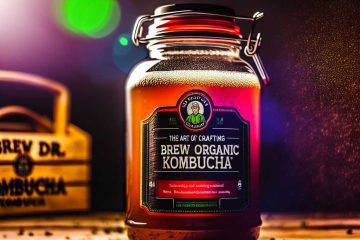The Beginner’s Guide to Making Your Own Kombucha at Home

The Beginner’s Guide to Making Your Own Kombucha at Home
Kombucha is a fermented tea that has gained popularity in recent years due to its potential health benefits, delicious taste, and easy production. Making your own kombucha at home is a rewarding and cost-effective way to enjoy this trendy beverage while experimenting with flavors and controlling the fermentation process. In this beginner’s guide, we will go over everything you need to know to start brewing your own kombucha at home, from gathering the necessary equipment to understanding the fermentation process and flavoring options.
Gathering the Necessary Equipment
Before you begin brewing your own kombucha at home, you will need to gather some essential equipment. The good news is that most of these items are relatively inexpensive and can be easily found at your local kitchen supply store or online. Here’s what you’ll need:
1. A large glass jar: You’ll need a one-gallon glass jar to brew your kombucha. Make sure that it is thoroughly cleaned and has no chips or cracks that could compromise the brewing process.
2. A breathable cloth or coffee filter: To cover your jar and prevent contamination while allowing air to flow in and out.
3. Rubber band: To secure the breathable cloth or coffee filter over the mouth of the jar.
4. Glass bottles with tight-fitting lids: For storing your finished kombucha. You can recycle store-bought kombucha bottles or purchase swing-top bottles.
5. Organic black tea: You’ll need about 8-10 bags of organic black tea to make one gallon of kombucha.
6. Organic cane sugar: You’ll need about 1 cup of organic cane sugar per gallon of kombucha.
7. SCOBY: This stands for “symbiotic culture of bacteria and yeast” and is essential for fermenting the tea. You can obtain a SCOBY from a friend who brews kombucha, purchase one online, or even grow one from a bottle of store-bought kombucha (more on this later).
Understanding the Fermentation Process
The process of brewing kombucha involves fermenting sweetened tea with the help of a SCOBY. The SCOBY consumes the sugar in the tea and converts it into beneficial acids, enzymes, and probiotics, resulting in a tangy, slightly effervescent beverage. Here’s a simple overview of the fermentation process:
1. Brew a pot of strong black tea: Use about 8-10 bags of organic black tea for one gallon of kombucha. In a large pot, bring water to a boil, add the tea bags, and steep for 10-15 minutes.
2. Add sugar and cool the tea: Stir in about 1 cup of organic cane sugar until it dissolves, then allow the tea to cool to room temperature.
3. Transfer the tea to a glass jar and add the SCOBY: Once the sweetened tea has cooled, transfer it to a clean, one-gallon glass jar and gently add the SCOBY.
4. Cover and ferment: Cover the jar with a breathable cloth or coffee filter and secure it with a rubber band. Place the jar in a warm, dark place to ferment for 7-10 days, checking the taste periodically.
5. Bottle and flavor: Once the kombucha reaches your desired level of tartness, remove the SCOBY, and transfer the kombucha to glass bottles. You can enjoy it as is or add flavorings such as fruit juice, herbs, or spices.
Growing Your Own SCOBY
If you’re unable to obtain a SCOBY from a friend or purchase one online, you can actually grow one from a bottle of store-bought kombucha. Here’s how:
1. Purchase a bottle of unflavored, raw, and unpasteurized store-bought kombucha.
2. Pour the entire bottle into a clean glass jar.
3. Cover the jar with a breathable cloth or coffee filter and secure it with a rubber band.
4. Place the jar in a warm, dark place and allow it to sit for 1-4 weeks, or until a new SCOBY forms on the surface of the liquid.
Flavoring Your Kombucha
Once you’ve mastered the basic process of brewing kombucha, you can start experimenting with different flavor combinations to create your own unique brews. Some popular flavoring options include adding:
1. Fresh or frozen fruit: Berries, citrus, mango, and pineapple are all delicious options for flavoring kombucha.
2. Herbs and spices: Ginger, mint, lavender, and cinnamon can add depth and complexity to your kombucha.
3. Fruit juices: Adding a splash of juice such as pomegranate, cranberry, or apple can enhance the flavor and color of your kombucha.
It’s best to add flavorings to your finished kombucha just before serving, as allowing the kombucha to ferment with the added ingredients can result in excessive carbonation and pressure buildup in the bottles.
Troubleshooting Common Issues
As with any new brewing endeavor, it’s common to encounter a few hiccups along the way. Here are some common issues that may arise when brewing kombucha at home, along with tips for troubleshooting:
1. Mold on the SCOBY: If you notice any mold growth on the surface of your SCOBY, discard the entire batch and start fresh with a new SCOBY and clean equipment.
2. Too sour or vinegary taste: If your kombucha tastes overly sour or vinegary, try reducing the fermentation time on your next batch.
3. Not sour enough: On the other hand, if your kombucha isn’t tart enough for your liking, try fermenting it for a few extra days and tasting it periodically.
4. Low carbonation: If you prefer your kombucha to be more effervescent, try bottling it in airtight containers and allowing it to sit at room temperature for a few extra days.
Wrapping Up
Brewing your own kombucha at home is a fun, rewarding, and cost-effective way to enjoy this popular fermented beverage. With the right equipment, a basic understanding of the fermentation process, and a little experimentation, you can create your own unique kombucha flavors and enjoy the health benefits of this probiotic-rich drink. Whether you’re a kombucha enthusiast or a beginner looking to dive into the world of home brewing, this guide provides a solid foundation for embarking on your own kombucha-making journey. Cheers to happy brewing!
[elementor-template id=”430″]
[elementor-template id=”433″]




0 Comments